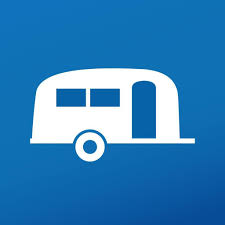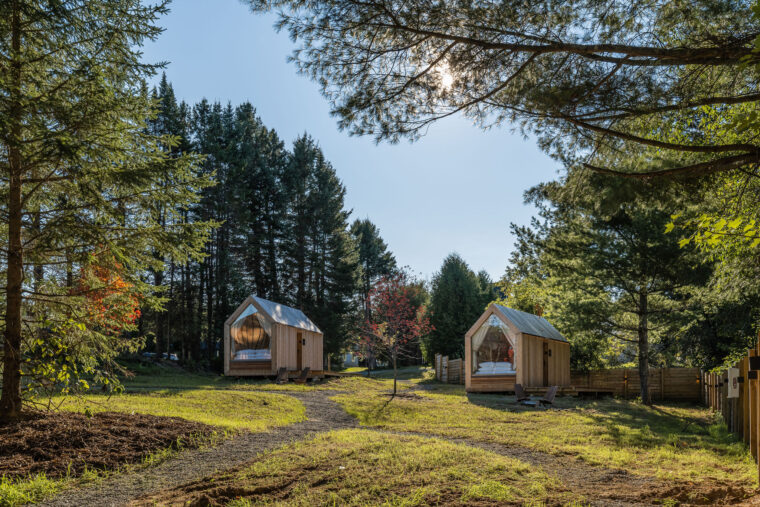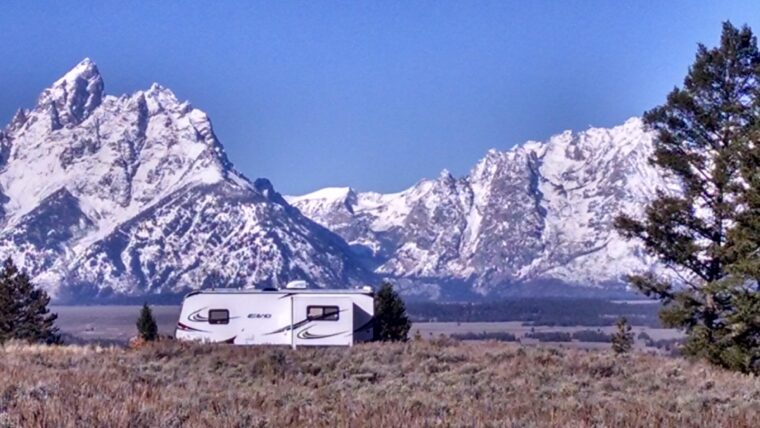So, you’ve decided to spend the winter in your RV and become a four-season camper. Before you go, there are several checklists to tick off before you and your rig are ready for the snowy season. These tips from winter-camping nomads will help make sure that you’re ready for whatever the cold brings you.
How to Have a Successful Winter Camping Trip
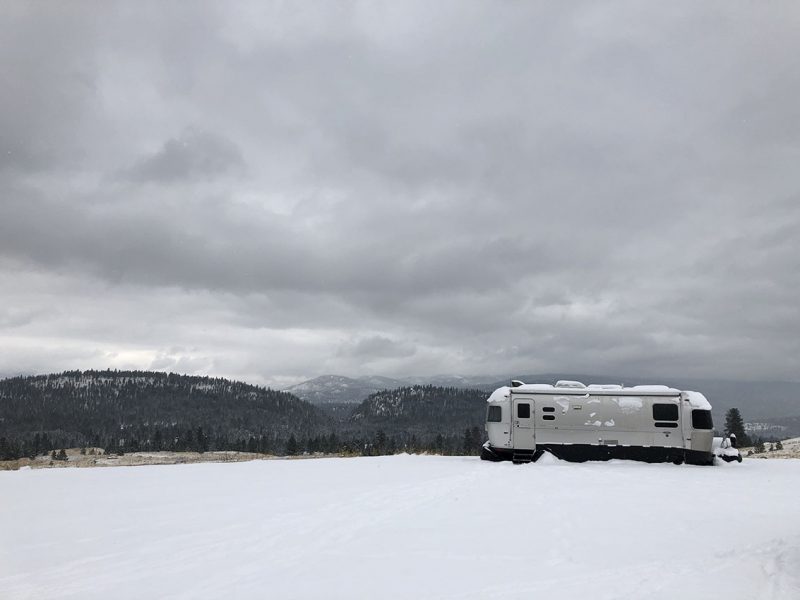
Exterior Upgrades For Your Rig
Insulate Your Water Hose
Unfortunately, letting your faucet drip isn’t a great option to keep your water from freezing in an RV. As one Airstream veteran says, “You’ll just end up with frozen water that will eventually accumulate enough to freeze your pipes on the way out of the RV.” Not ideal.
We also don’t recommend wrapping your water hose (if you’re hooked up, that is) with heat tape; a safer alternative is a heated water hose.
Insulate the Undercarriage
One of the best ways to trap heat and keep your whole rig warm is to insulate the bottom. Not only will this help keep the frozen ground from messing with your RV’s underparts, but it will keep your floors warmer and your feet happier.
There are a few ways to do this. You can spend money on custom RV skirting, or you can build a skirt yourself. Vinyl billboard tarps work well and are easy to set up and tear down. The thicker the vinyl gauge, the warmer your rig will stay, but thicker gauges are more difficult to handle. If you plan to move your rig over the course of the winter, folded-up vinyl skirt siding is the way to go.
Everything You Need to Know About RV Skirting Solutions

Insulated styrofoam boards can also work if you don’t want to set up a heavy tarp, but they’re prone to leaving gaps at the seams. To combat this potential heat loss, you can mount your styrofoam boards with aluminum foil tape, which is flexible and holds securely but won’t leave behind a sticky residue when you remove it come springtime. Use aluminum foil tape that withstands the full range of temperatures you’ll be traveling in, so you can use it at any time of the year.
If you’re going to be in colder weather—and consistently below freezing—provide additional heat under your rig for a more comfortable RV experience. Clamped lamps with aluminum reflectors are easy to attach to the underside of your rig and don’t require permanent modifications. Make sure to stock up on infrared heat bulbs that provide heat, rather than purely light.
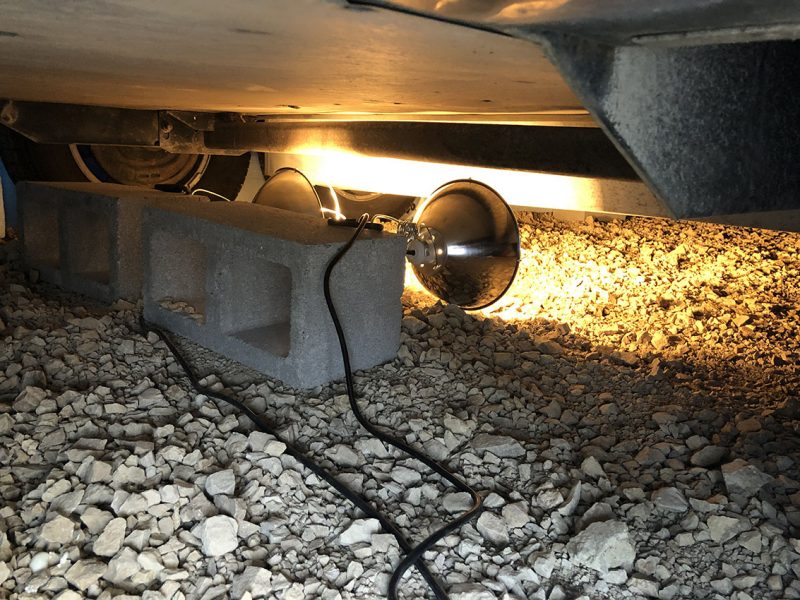
We can’t forget an old-school approach to insulation—snow. If a good blizzard comes through, pile the snow around your RV’s skirting. Snow, while cold, retains heat. Piled snow can also protect your skirting from damage caused by freezing, wind, salt, and more.
Install a Sturdier Sewer Hose
If you’re working with an older hose, there’s a good chance it could crack in the cold. Replacing it or adding on a sewer hose extension will help keep it working in cold winter times. Wrapping your sewer hose with a heated cord or insulation and duct tape is also a great idea.
Add Insulation to Your Windows
A large amount of heat is lost through windows, so adding insulation will significantly increase your heat retention. While the most effective insulation isn’t transparent, removable window inserts can still help you save heat on the coldest nights without compromising natural light.
Though it’s a big project, those who regularly camp in colder temperatures might benefit from installing in-wall insulation. Some campers add Reflectix foil insulation to the inside of their rigs to make sure that they’ll stay warm throughout the winter. This foil insulation can be key for insulating RVs or travel trailers, when installed between the walls, over windows and doors, or as an additional layer around your skirting.
Rig Roundup: The Best Four-Season RVs
Interior Upgrades For Your Rig
Portable Heater or Woodstove
Whether you use a plug-in heater or a propane-powered heater (depending on whether you’re boondocking or hooked up to power), you’ll probably want a space heater. Most portable heaters are now equipped with an automatic shut-off switch if it’s not perfectly square on the ground, meaning your heater will turn off if it tips over. Always properly ventilate your rig when using a propane or other natural gas heater.
If you’re willing to make the necessary improvements to your rig, a small wood-burning stove can make a huge difference—especially if you boondock in the snowy woods. You can even customize your wood stove based on the size of your rig. A wood-burning stove, and the installation of the stovepipe exhaust, is an investment, but the aesthetics and warmth are desirable.
Warm Blankets and Heating Pads
If you have enough power (or are plugged in), electric blankets and heating pads can make a huge difference—especially if you don’t want to run an electric heater throughout the cold, wintery night.
What to Pack For a Winter RV Adventure
If you don’t have the power to spare, use low-temperature-rated sleeping bags (down is very warm), thick duvets, or wool blankets. Another tried-but-true option? Hot water bottles—heat up water right before bed and place a hot water bottle under the covers by your feet. Give it a few minutes to warm up the bed; you’ll be more than cozy when you’re ready to sleep.

Dehumidifier
While a dehumidifier won’t directly produce heat, it affects how warm you feel. Removing moisture from the air in humid climates can remove the chill inside your RV. A small dehumidifier can go a long way in a small space.
Slippers and Rugs
You lose a lot of heat out of your head and your feet. Wearing slippers around the rig keeps your toes cozy, and the rest of your body happy as well. Rugs lift your feet off the cold floor (especially if your RV is equipped with tile, linoleum, or hardwood flooring) and help keep the warm air toasty.

